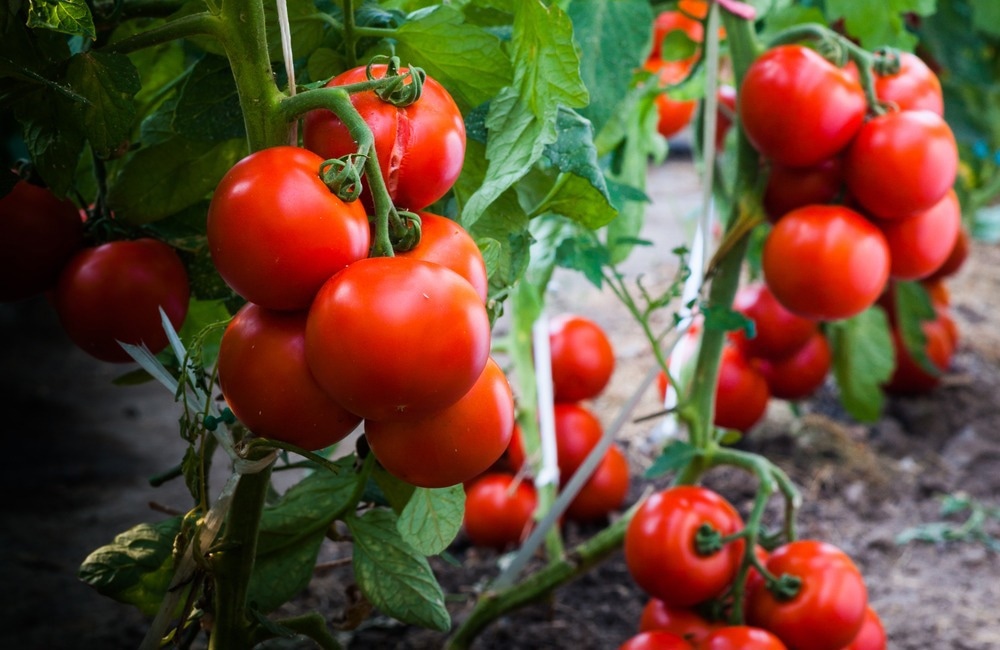The tomato plant (Solanum Lycopersicum) is the second most important global food product after potatoes. However, a broad range of diseases significantly reduce its yield. A recent study published in the journal ACS Agricultural Science & Technology presents a thorough evaluation of the efficacy of copper-based nanopesticides for tomato disease management.

Study: Efficacy-Associated Cost Analysis of Copper-Based Nanopesticides for Tomato Disease Control. Image Credit: Fotokostic/Shutterstock.com
Tomato Disease Control: Why is it Important?
Tomatoes have nutritional benefits such as vitamins, phytochemicals, and antioxidants and are the world's second-largest vegetable crop. However, tomato crops are susceptible to over 200 diseases, drastically reducing their yields and accounting for 70–95 percent of yearly losses.
Early blight, induced by Alternaria solani (A. solani), is one of the most devastating tomato plant diseases. It can develop at any phase of the plant development cycle and reduces tomato fruit harvests by 50 to 86 percent. In recent years, fusarium wilt, caused by the soil-borne fungus Fusarium oxysporum (F. oxysporum), has resulted in a 10-80 percent output loss in tomato cultivation.
It is vital to safeguard tomato crops against these infectious diseases to limit any economic loss and reach consumption demands.
Limitations of Conventional Pesticides of Tomato Crops
Biological and chemical pesticides are often employed to manage tomato diseases. Although biopesticides can prevent illnesses and minimize contamination, they are costly and time-consuming to apply, greatly restricting their practical uses.
Traditional chemical pesticides are also efficient in plant disease management, but their overuse pollutes the environment and creates serious health hazards. Furthermore, long-term usage of traditional chemical pesticides promotes disease resistance and raises economic costs.
Ineffectual use of conventional pesticides causes 20-40% of worldwide crop losses, resulting in annual financial damage of around $220 billion. As a result, high-efficiency pesticides are required to efficiently control illnesses and assure high tomato fruit yields, resulting in sustainable farming without jeopardizing ecological integrity or public health.
Nanopesticides for Tomato Disease Control
Nanopesticides, consisting of nanoscale active ingredients (AIs) with broad-spectrum insect repellent, bactericidal, and fungicidal capabilities, has recently gained prominence for tomato disease management.
Nanoparticles have a substantially higher surface-to-volume ratio, improved absorption, and chemical bonding compared to bulk-sized particles. These features enable nanopesticides to deliver drugs more efficiently in tomato plants. Furthermore, unregulated absorption of conventional pesticides can impede plant development owing to phytotoxicity.
In this context, nanopesticides can improve absorption of active ingredients, improved leaf adherence, and gradual release of active ingredients, making nanopesticides ideal for usage in tomato disease management applications.
A Comprehensive Analysis of Copper-Based Nanopesticides
Although nanopesticides have demonstrated tremendous potential to preserve and enhance agricultural yields while reducing environmental concerns, there is still a knowledge gap in the financial evaluation of nanopesticides. For effective commercialization in the low-margin agriculture industry, nanotechnology solutions must be economically comparable with traditional formulations.
As a result, a complete comparison of the effectiveness and cost of nanopesticides and traditional pesticides against tomato diseases is required. This research can assist in identifying the technical and economic benefits of nanopesticides over conventional pesticides.
As copper is a powerful antibacterial agent and a crucial micronutrient in plant defense mechanisms, it has traditionally been utilized to manage several microbial diseases in tomato crops.
Keeping the above considerations in mind, the researchers in this study investigated the effectiveness and cost trade-offs between nanopesticides and traditional pesticides using copper-based compounds. The major goals of the study were to evaluate the efficacy and cost-effectiveness of copper-based nanopesticides and identify the critical elements determining the effectiveness of copper-based nanopesticides.
Key Developments of the Study
From a technical standpoint, the findings suggest that copper-based nanopesticides outperform traditional copper pesticides in terms of effectiveness, resource efficiency, and biomass production. Copper-based nanopesticides were shown to be as cost-effective as traditional pesticides, indicating their viability for large-scale applications.
Moreover, the researchers discovered that size, dose, form, chemical characteristics, and administration techniques all substantially impacted the effectiveness of copper-based nanopesticides for tomato disease management.
These findings point the way forward for improving nanopesticide effectiveness and assisting agricultural producers in recognizing exciting nanopesticides from a scientific and cost-effectiveness standpoint. These results can thus contribute to the enhancement of crop production and the development of sustainable farming techniques.
Reference
Liu, P. et al. (2022). Efficacy-Associated Cost Analysis of Copper-Based Nanopesticides for Tomato Disease Control. ACS Agricultural Science & Technology. Available at: https://pubs.acs.org/doi/10.1021/acsagscitech.2c00098
Disclaimer: The views expressed here are those of the author expressed in their private capacity and do not necessarily represent the views of AZoM.com Limited T/A AZoNetwork the owner and operator of this website. This disclaimer forms part of the Terms and conditions of use of this website.